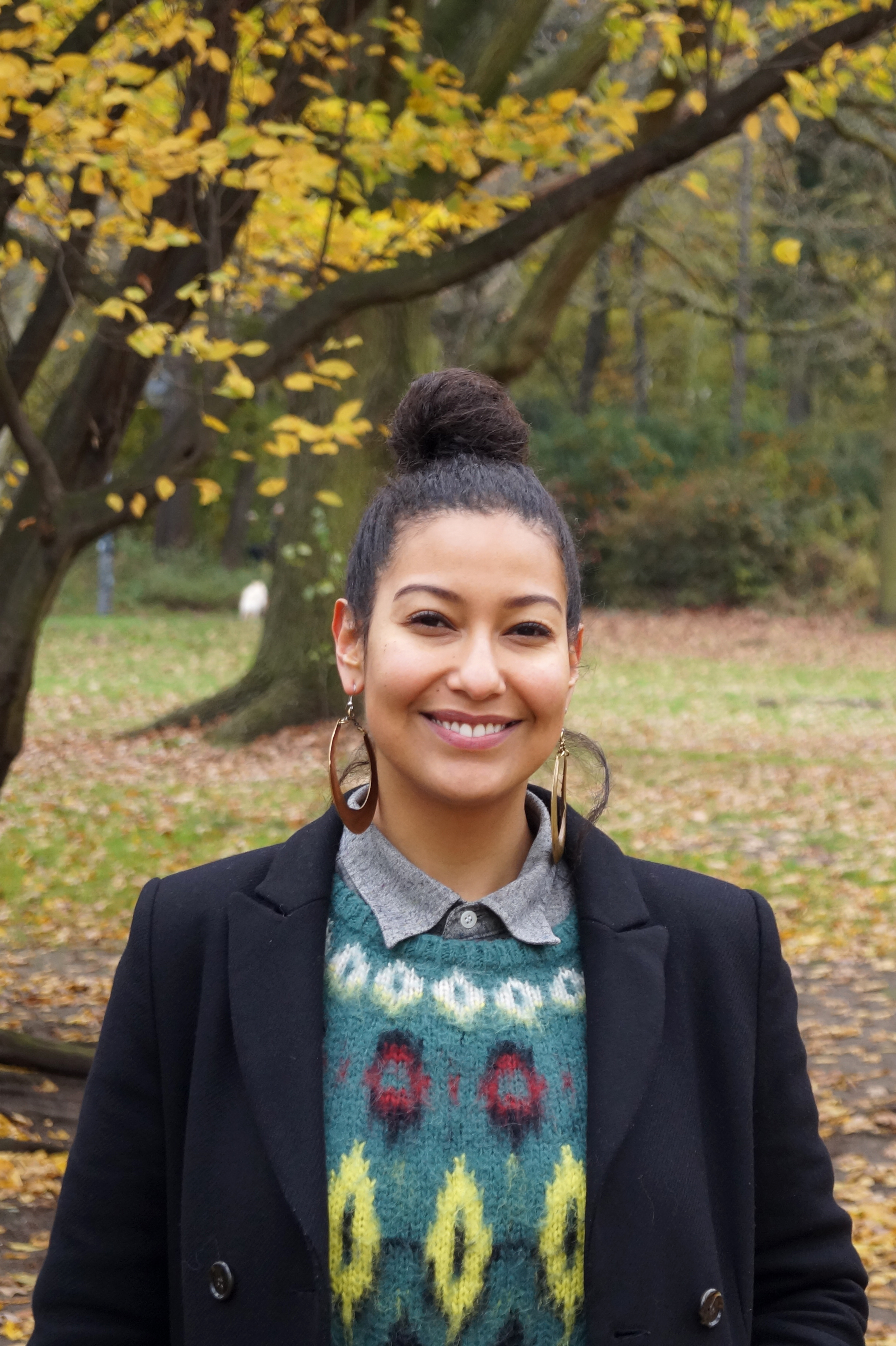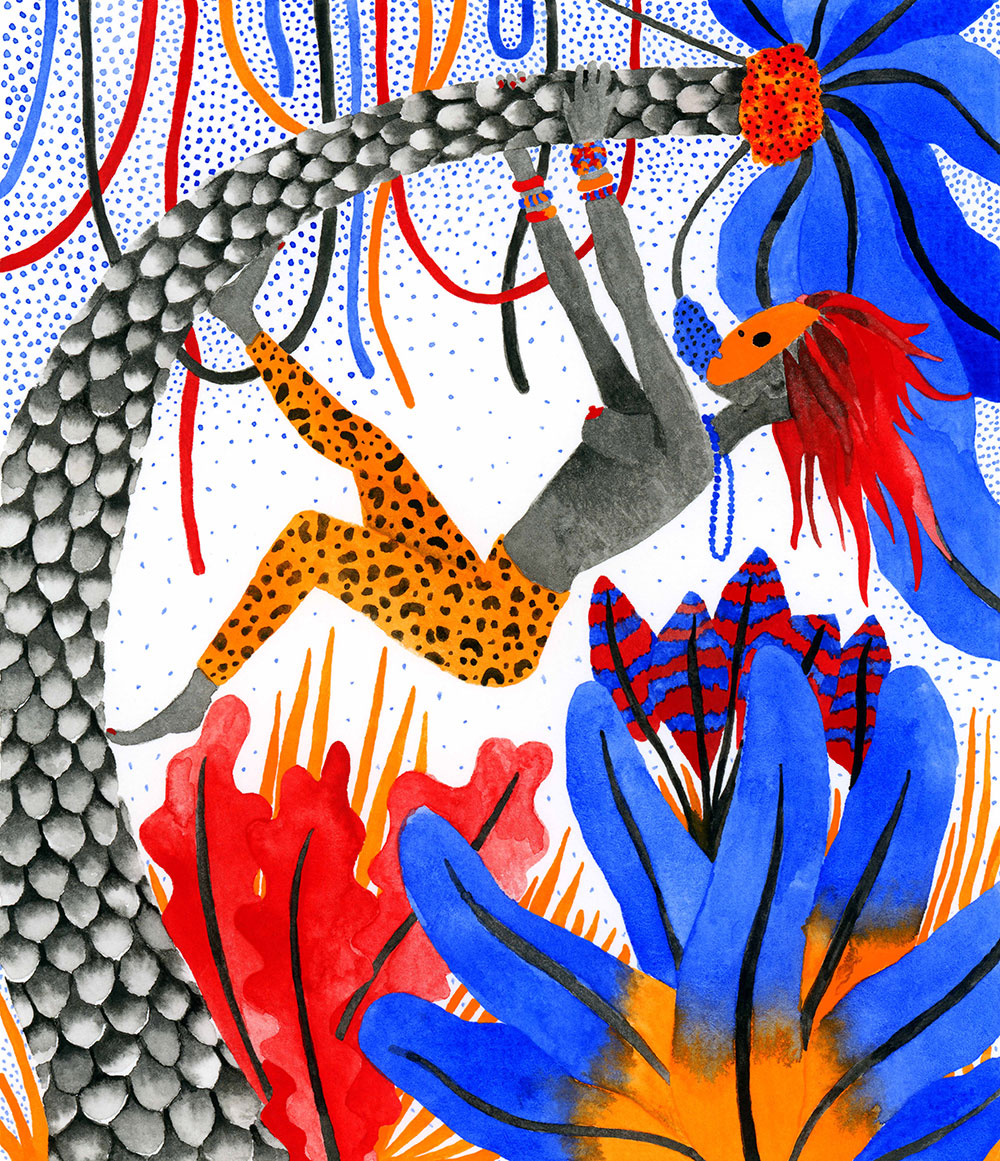Hélène Baum
Hélène Baum is a Berlin based graphic designer and illustrator with a passion for color. After finishing her design studies in Lyon (2010), she went on to work for small and big design studios in Amsterdam, London and Berlin – making illustrations, animations and all matter of designs, from books to flyers. Just a year ago, Hélène decided to take the leap into freelance with a focus on illustration. We're loving her reflections on the transition from part-time to full-time freelance as well as her insightful perspective on color.
Tell me about your path to becoming a freelance graphic designer and illustrator.
Initially, I studied visual communication with graphic design as the focus. My first job was in Amsterdam, where I worked part-time as a graphic designer in a studio called Roosje Klap, rooted in the culture and art scene of the Netherlands. The rest of the week was spent doing little design projects for friends, drawing and making jewelry. It was a sort of exploratory time. I then moved to Berlin and while searching for a job there, was asked to freelance on a five months ident animation project for ITV3 in London. It was an amazing time! I remember being impressed how these 15-20 freelancers in the team were doing what they were best at and the energy emerging from this in the office. It was very inspiring. That’s when I started to really explore the illustration side of my activity by creating short, hand drawn animations with felt pens and watercolour. I couldn’t stop drawing. When I came back to Berlin though, I took on a full-time job as a graphic designer at online fashion retailer Zalando, as I needed to pay bills quite fast. It was also still unclear to me, how to process this new found passion for making illustration (static or moving). I stayed in that position for three and half years and used the evenings to learn and work on my art. A year ago I leaped again and decided to go freelance with illustration as the primary focus.
In the beginning, how did you attract your first good clients?
Essentially by doing a lot of self-initiated work and putting it online (Portfolio website, Instagram, Facebook, Women who draw…)
Can you tell us a bit more about how this quote, from Édouard Manet, guides your life and work?: "There are no lines in nature, only areas of colour, one against another."
I love this quote because of the deeper meaning I read into it, although it might not have been Edouard Manet's intention. No lines, no separations, no borders, no walls, just different people and nature coexisting next to each other. Very peace and love!
Colour is the most crucial aspect of my work, and when I use lines, they are to be seen as colored surfaces. They are just thinner areas of colour as opposed to outlines and dividers.
You studied in Lyon and have since lived in Amsterdam, London, and now Berlin. How have the moves from one place to another impacted your work?
In each city, I learned something new about art and design but also about myself and how I envisioned my career going.
Lyon was about studying and exploring various forms of expression. It was fun but still all over the place while identity and style were forming.
Amsterdam is a creative heaven because dutch clients are generally open for bold and new design, which means the artist/designer is very free to explore and make daring art. It was a fantastic place to have a first job and get inspired by the colourful designs.
London is where I grew up as a child, so it feels like home, but I also did a few internships there while studying and became friends with Andersen M Studio. The Danish siblings do graphic design, photography and specialize in paper animation. They shaped me a lot, with their painstakingly beautiful craftsmanship and their collections of weird objects, music, and books. Later they asked me to join the ITV3 Idents project where, as mentioned earlier, the idea of illustrating started to take shape.
I’ve been in Berlin for five years now, and although this city is definitely a bit crazy and ever-changing, it has been a big stabilizer. Staying in one place for a while helps to figure out what the next step is. In my full-time job, I found out what doesn’t work for me and defined what does, all the while taking the time to build an illustration portfolio.
Do you have any tips for being your most productive?
I think you have to find your own rhythm. When do you work at your best, are the most motivated and stimulated?
When I stopped my full-time job, I planned to still get up early in the morning, spend the day working and then keep the evenings flexible for social activities or more work if needed. It was always my assumption that I was at my most productive, late morning/afternoon. But I soon realized I was actually a night person. So now, unless there is a tight deadline, I start working early afternoons until late after midnight.
Also taking real and regular breaks helps. Air out the brain.
What is your favorite thing about freelance?
It’s liberating to be able to make decisions yourself about where, how and when you work. However, I think the best feeling has been the one of getting hired for what I love doing the most and being appreciated for it.
Do you have any tips for dealing with the nitty-gritty business details?
I’m doing my bookkeeping myself as I’m still relatively new to freelancing and everything is quite manageable, but I will definitely hire an accountant very soon. No crazy system or tips. I just keep receipts and bills in one place and ideally put these into an Excel spreadsheet once a month to avoid panic when doing taxes. For Invoices, I keep two folders: "paid“ and "unpaid,“ always making sure to write down when I sent the invoice exactly. Until now I’ve been quite lucky with payments coming in on time, but you never know. And keeping part of the income aside for taxes and unforeseeable expenditures.
Since you are your own boss, do you have any advice for maintaining a work-life balance?
I would say, once you’ve figured out how to work best, see when you can carve out moments for friends, family and yourself and try to stick to it. Depending on how busy work gets, of course, you may need to push things around. But in the long run, if you don’t rest and relax at some point, you, your work, your clients and the people you love will suffer which is counter-productive on all levels.
How do you stay creatively inspired?
When possible, traveling to a new place is the most inspiring for me. But I make regular trips to bookshops, where I pour into magazines and books about art, design, photography, travel, archeology, anything really that stimulates me at that moment. Going for walks in the park and city, seeing an exhibition, movie or concert are great too. Basically any activity that breaks my routine and gives my mind fresh food for thought, is a source of new creativity.
The 3 greatest attributes you need to be a freelance creative are:
Responsiveness, Patience, Passion.









